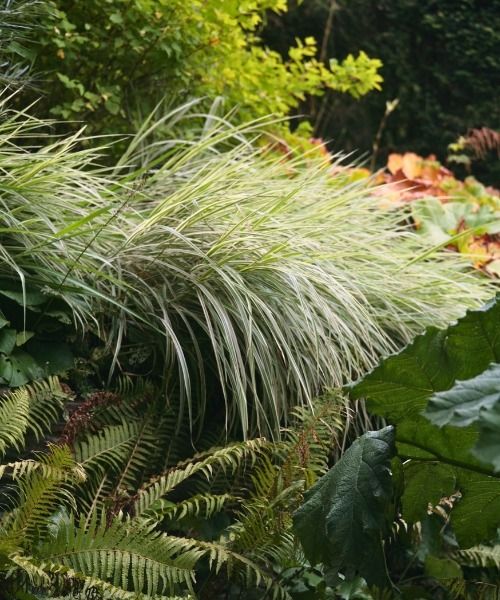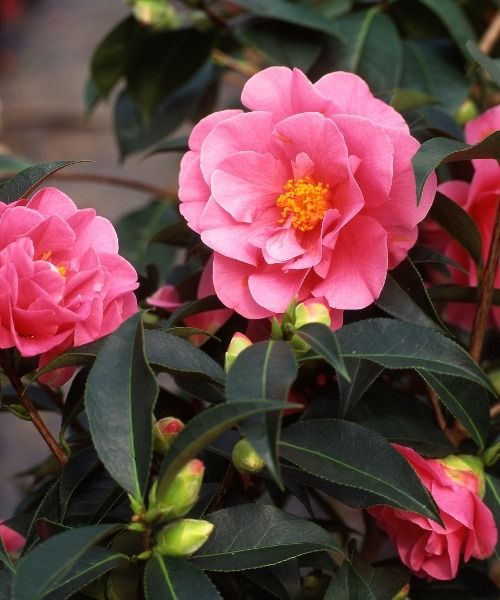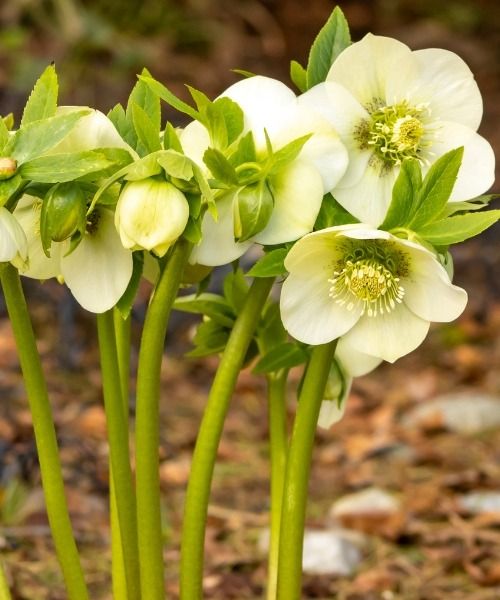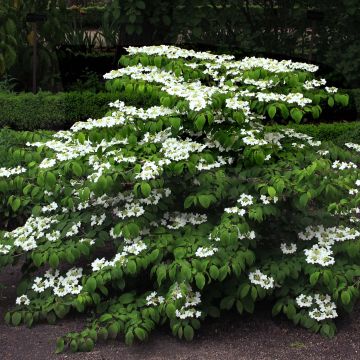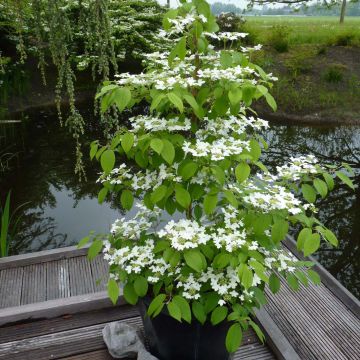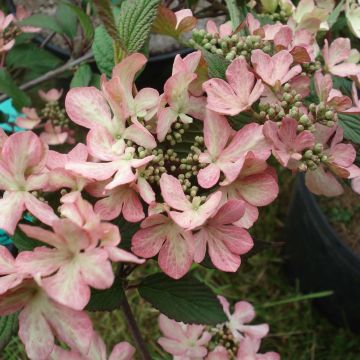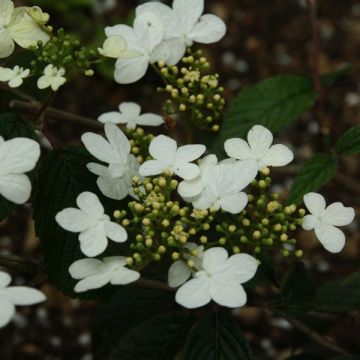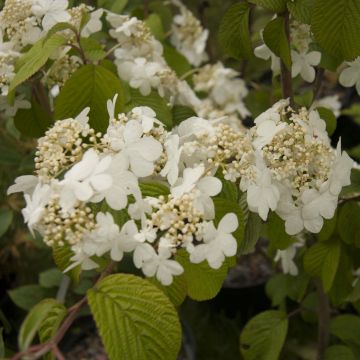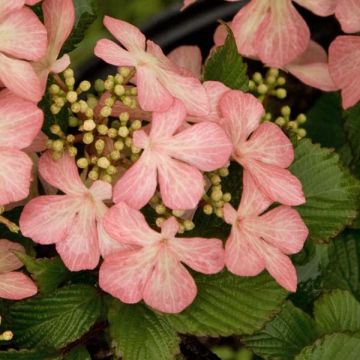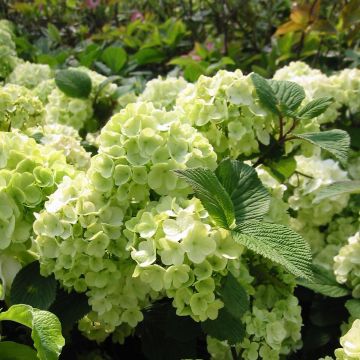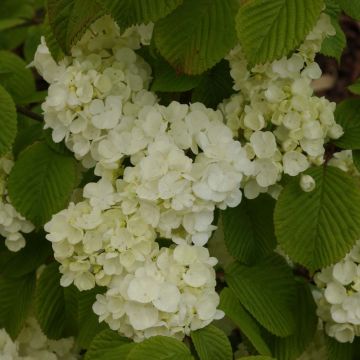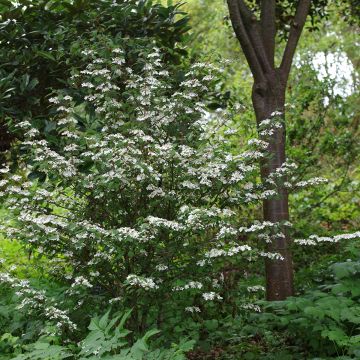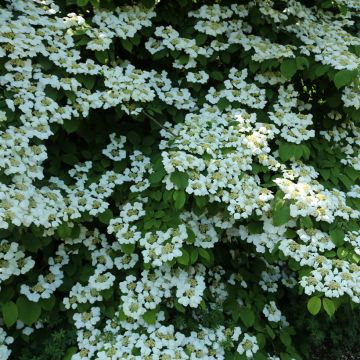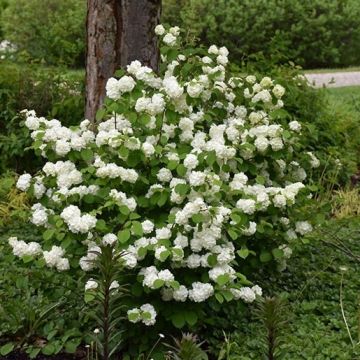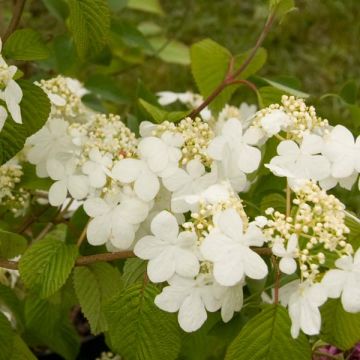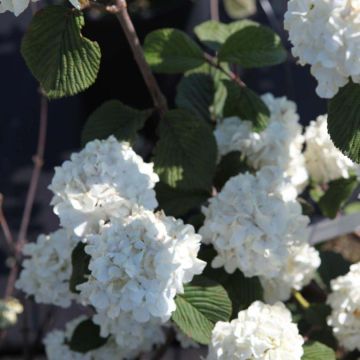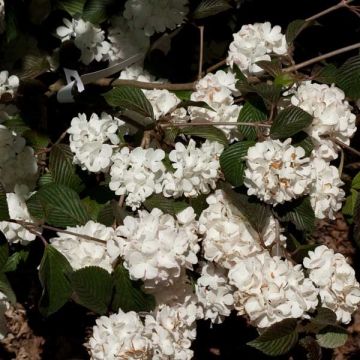Tiered Viburnums
Does this plant fit my garden? Set up your Plantfit profile →
Available in 4 sizes
Available in 2 sizes
Available in 3 sizes
Available in 1 sizes
Available in 2 sizes
Available in 3 sizes
Available in 2 sizes
Available in 1 sizes
Available in 1 sizes
Available in 2 sizes
Available in 1 sizes
Available in 1 sizes
Available in 1 sizes
Available in 2 sizes
Available in 2 sizes
Available in 2 sizes
Available in 1 sizes
Available in 1 sizes
Our Tiered Viburnums. Under this term, we discover the Chinese Viburnums (Viburnum plicatum), with green, deciduous foliage that sometimes takes on beautiful autumnal colours in reddish tones. The branches of these viburnums, which are almost horizontal, are arranged in tiers. This gives Viburnum plicatum and its varieties a characteristic habit, whose architectural splendor is accentuated when the bush is in flower, between May and July. The flowering is abundant, generally white, or very rarely pink in a few selections like Viburnum Plicatum Pink Beauty. The flattened inflorescences are composed of 2 types of flowers: a multitude of small fertile flowers in the centre, surrounded by more visible sterile flowers. In certain cultivars such as Viburnum plicatum ‘Lanarth’, ‘Mariesii Great Star’, or ‘Shasta’, this flowering gives way to very decorative bright red fruits at the end of the season. Tiered viburnums are shrubs that are generally wider than they are tall, reaching approximately 2.50 m (8ft) in height and 3.50 m (11ft) in spread. But some modern cultivars like Viburnum 'Kilimandjaro' stand out for their narrow and pyramidal habit, which is very unusual and more suitable for small spaces.
Viburnum plicatum is a plant that prefers non-calcareous soil and is a companion to plants that prefer ericaceous soil: camellias, rhododendrons, Japanese maples, etc.
Haven't found what you were looking for?






























